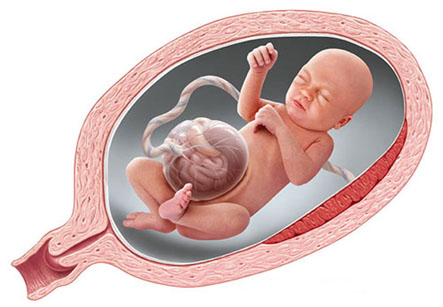Omphalocele
Introduction
An omphalocele is a congenital (or present at birth) abnormality in which abdominal organs protrude through an opening in abdominal muscles in the area of the umbilical cord. These protruding organs are covered by a transparent membrane called as the peritoneum. The omphalocele may be small, with only a portion of the intestine protruding outside the abdominal cavity. Or else, it may be large, with most of the abdominal organs (including intestine, liver, and spleen) being outside the abdominal cavity. More than two-thirds of cases with omphalocele have abnormalities of other organs or body parts, most commonly affecting the spine, digestive system, heart, urinary system and limbs.
Incidence of omphalocele
A small omphalocele occurs in 1 out of every 5,000 live births. However, a large omphalocele happens in only 1 out of 10,000 live births. If the baby has no other major problems, the chance of having another baby with an omphalocele is 1% (1 in 100).
Some babies with omphalocele can have other abnormalities of their heart, spine, or digestive organs. The baby is evaluated to see if he or she has any of these problems. If the baby does have any of these problems, the probability of other baby being born with omphalocele is high.
Iranian specialists have made remarkable achievements in infants' surgeries and Iran is among few countries that have gained access to the latest surgical technologies

Babies born with an omphalocele frequently have other complications which include:
1. Poor development of lungs
2. Intestines which are slow to handle food
3. Heart malformations
4. Beckwith-Wiedeman Syndrome (a condition typified by a large tongue, high insulin and low blood sugar)
5. Chromosomal abnormalities
Cause of an omphalocele:
The exact cause of an omphalocele is not known. It is also unknown whether the mother can do anything during pregnancy to prevent this condition from occurring. Between the 6th and the 10th weeks of pregnancy, the intestines actually project into the umbilical cord as they are growing. Usually by the 11th week of development, the intestines return to the abdomen. When this fails to happen, an omphalocele can develop.
Diagnosis:
An omphalocele is often detected during the second and third trimesters of pregnancy with the help of ultrasound technology. Once detected, a fetal echocardiogram (ultrasound of the heart) is frequently performed in order to check for any heart abnormalities before the baby is born.
After birth, the doctor will note the omphalocele and order x-rays to evaluate abnormalities of other organs or body parts.
Treatment:
Treatment for correcting an omphalocele depends upon many factors including the extent of the condition, the baby’s age, overall health, the baby’s tolerance for medications and parental preferences of the doctor for treatment.
Some babies with omphalocele can have other abnormalities of their heart, spine, or digestive organs.
In cases of a small omphalocele, an operation is done immediately to return the organs into the abdomen and to close the opening in the abdominal wall to prevent infection or any tissue damage.
For a large omphalocele involving numerous organs, the surgery is often performed in stages, moving the organs back into the body over a period of several days to weeks. The need for the staged surgery arises as the baby’s abdomen is too small and underdeveloped to hold all of the organs at once. During this period, the exposed organs are protected by a sterile, protective sheeting to prevent the risk of infection. Babies with omphalocele with underdeveloped abdominal cavities may also have breathing difficulties and may require the assistance of a ventilator machine until they can breathe on their own.
Prognosis for an omphalocele:
If an omphalocele is the only obvious health problem present in an infant, full recovery from it is frequently expected. However, when an omphalocele is associated with other birth defects, the prognosis depends on these conditions. The prognosis of the condition should be consulted with the baby’s physician before giving any treatment.
This problem is diagnosed and repaired in the hospital at birth. After returning home, the health care provider should be called immediately if the infant develops any of these symptoms:
1. Decreased bowel movements
2. Fever
3. Feeding problems
4. Swelling in the abdomen
5. Green or yellowish green vomit
6. Vomiting (different than normal baby spit-up)
7. Worrisome behavioral changes